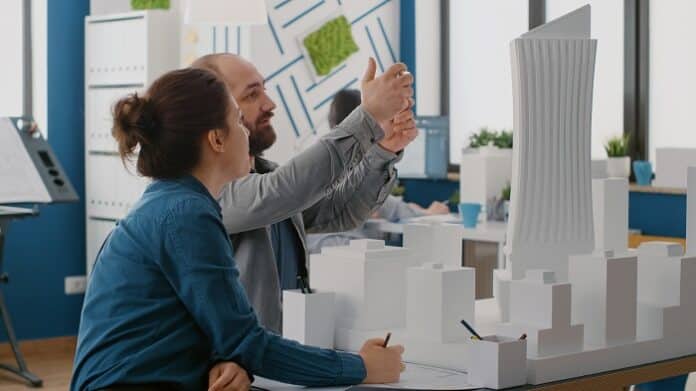The building sector finds itself in the front of a technological revolution. Adopting creative technology has become essential for building firms as the world’s needs for quicker, more affordable, and sustainable building solutions grows. These developments improve project quality and sustainability as well as simplify processes. Technology is changing conventional building techniques from digital tools like Building Information Modeling (BIM) that provide thorough project renderings to factory-made user modular construction that lowers waste and speeds up timeframes.
These technologies support environmentally sustainable behavior and improve teamwork, accuracy, and efficiency. Emphasizing the transforming power of these technologies in building a more resilient and responsive sector, this essay investigates many technological advances that construction firms may implement to improve their efficiency and sustainability.
Embrace Building Information Modeling (BIM)
Improve Collaboration
More exact planning and design made possible by detailed 3D models help to spot any problems early in the process. Fewer delays and large cost reductions are possible from this forward view.
Boost Efficiency
BIM clearly depicts the project clearly, simplifying the building process. Good resource allocation and scheduling made possible by this clarity assist in minimizing downtime and maximizing labor usage.
Utilize Factory-Made Modular Construction
Efficiency of Time
Project deadlines are greatly shortened by modular building. Building may go without weather-related delays as modules are manufactured in a factory while site work is concurrently carried out, accelerating project completion.
Savings
Lowering material waste and increasing worker efficiency by building in a regulated manufacturing environment may help to cut general expenses. Less finance and interest expenses also follow from the shortened building schedule.
Quality Control
greater quality control made possible by factory settings compared to conventional on-site building. Standardization and consistent circumstances guarantee better quality and less flaws in the produced product.
Implement Construction Management Software
Simplified Project Management
From budgeting to scheduling, software solutions assist in controlling every facet of a project so that it remains under budget and on schedule.
Improved communication
These instruments help team members share information and communicate in real-time, lowering delays and enhancing decision-making.
Tracking sustainability
Many systems let businesses follow green construction guidelines by including tools for measuring sustainability indicators such as trash generation and energy use.
Adopt Green Building Technologies
Systems with Energy- Efficiency
Energy-efficient HVAC systems, lighting, and insulation will help a structure use much less. Further improving the energy economy are smart building technologies like automatic lighting and temperature control systems.
Renewable energy sources
Including solar panels and wind turbines in architectural plans helps to reduce carbon emissions and dependency on fossil fuels.
Water Conservation
Water-saving technology, including greywater recycling, low-flow fixtures, and rainwater collecting systems, will help buildings use much less water.
Leverage Drones for Site Monitoring and Surveys
Improved Site Inspections
Accurate and thorough aerial surveys produced by drones capture high-resolution pictures and videos of building sites. Using this information, exact site maps and 3D models may be produced, enhancing design and planning.
Increased Safety
Drones may perform inspections free of worker risk by accessing dangerous or difficult-to-reach locations. This capacity lowers the possibility of mishaps and improves security on building sites.
Monitoring in Real Time
Real-time drone construction progress monitoring lets project managers see and fix problems immediately. This proactive strategy minimizes delays, and projects remain on time.
Invest in Robotics and Automation
Automated Bricklaying
By precisely and consistently placing bricks, robotic bricklayers can operate quicker and more correctly than human laborers. This technique lowers the chance of mistakes and accelerates the building process.
Automated building equipment
By completing tasks with little human involvement, autonomous equipment—such as excavators and bulldozers—improves productivity and safety on building sites.
3D printing involves
3D printing technology transforms buildings by allowing the very precise fabrication of intricate structures and components. This technology makes creative design ideas possible and helps to reduce material waste.
Conclusion
Improving sustainability and efficiency in building methods depends on adding technology to them. These technical developments—from factory-made modular construction to Building Information Modeling (BIM—have great advantages for building firms. Companies that embrace these tools and approaches may improve project results, lower environmental impact, and remain competitive in the fast-changing building sector.





